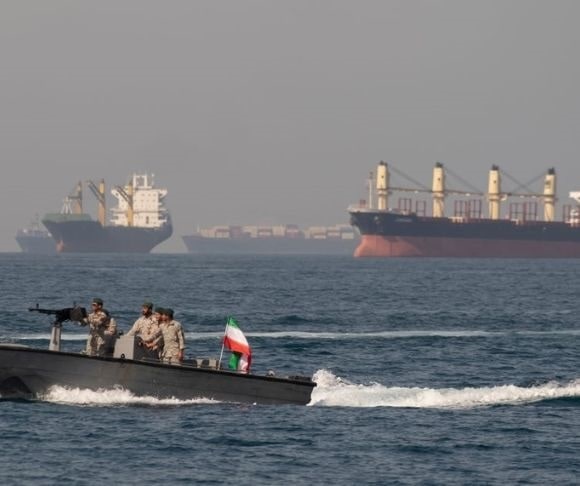The problem with Iran is that Iran is the problem. The Tehran leadership is a major exporter of terrorism in the world; more often than not, it’s at the bottom of any tension in the Middle East. Liberty Nation has reported extensively on the threat this country has become to Western nations and its Gulf neighbors. However, Iran may have met its match as far as the Arabian Gulf and Strait of Hormuz are concerned.
Iran – the Bad Boy of the Middle East
“Iran will remain a regional menace with broader malign influence activities,” the 2023 Annual Threat Assessment of the US Intelligence Community reported. Recently, Tehran’s Islamic Revolutionary Guard Corps Navy (IRGCN) has terrorized peaceful commercial cargo and oil tanker vessels in the Arabian Gulf and the Straits of Hormuz. IRGCN maritime terrorists are carrying out on the high seas the anti-West and anti-US malign policies held by Tehran. In a May report, Liberty Nation covered the latest Iranian warlike operations:
“It seems Iran wants to flex its muscles by challenging the US presence in the Persian Gulf region. Not long ago, Iranian naval vessels attempted to steal the Navy’s surface drones. Navy ships in the area acted rapidly and forced the IRGCN to return the unmanned watercraft. Taking on the US Navy could have unanticipated consequences. Such behavior is a dangerous gambit for Tehran leadership.”
To meet the IRGCN challenge, the United States has begun building forces in the Gulf region to ensure Iran is unsuccessful in its maritime terrorist activities. Reporting for Military.com, Lolita C. Baldor wrote, “The US is beefing up its use of fighter jets around the strategic Strait of Hormuz to protect ships from Iranian seizures, a senior Defense official said Friday [July 14].” The spokesperson explained that the United States would send F-16 Fighting Falcons to join A-10 Warthogs, ground attack jets.
The Defense Department is responding to attempts earlier in July by the IRGCN to seize two large oil tankers close to the narrow strait. Iranian naval vessels engaged one of the commercial vessels operating in international waters off the coast of Muscat, Oman, with automatic weapons. There was minor damage and no injuries. According to a July 5 Associated Press account of the action, “The Iranian navy did make attempts to seize commercial tankers lawfully transiting international waters. The US Navy responded immediately and prevented those seizures,’ said Commander Tim Hawkins, spokesman for the US Navy’s Fifth Fleet.”
Thwarting Iran in the Arabian Gulf Should Be Routine

Iranian Navy soldiers at an armed speed boat in the Persian Gulf near the strait of Hormuz, April 30, 2019. (Photo by Morteza Nikoubazl/NurPhoto via Getty Images)
The rapid response by the US Navy is a welcome reaction in the Arabian Gulf operations. Hopefully, protecting commercial maritime fleets will be the standard practice as long as the IRGCN is harassing and attempting to seize ships in international waters. Sending F-16s to the region is just the beginning. “in response to a number of recent alarming events in the Strait of Hormuz, the Secretary of Defense has ordered the deployment of the destroyer USS Thomas Hudner, F-35 and F-16 fighters to the US Central Command Area of Responsibility to defend US interests and safeguard freedom of navigation in the region,” Sabrina Singh, deputy Defense Department press secretary, told Pentagon correspondents. Deploying more F-16s, an additional destroyer warship, and the F-35 Lightning II fifth-generation stealth ground attack fighters will significantly increase the military capability to deal effectively with Tehran maritime attacks.
The Biden administration is attempting to improve its game in the Gulf region, and the United States needed to regain some lost credibility after China increased its influence in the Gulf states. Furthermore, US warships were recently embarrassed in the Gulf, as IRGCN arrogantly attempted to steal an unmanned US Navy sea drone. More important, however, the United States must demonstrate convincingly that it is a formidable and willing force to protect the interests of friends worldwide. Making that point with Iran is an excellent place to start.




